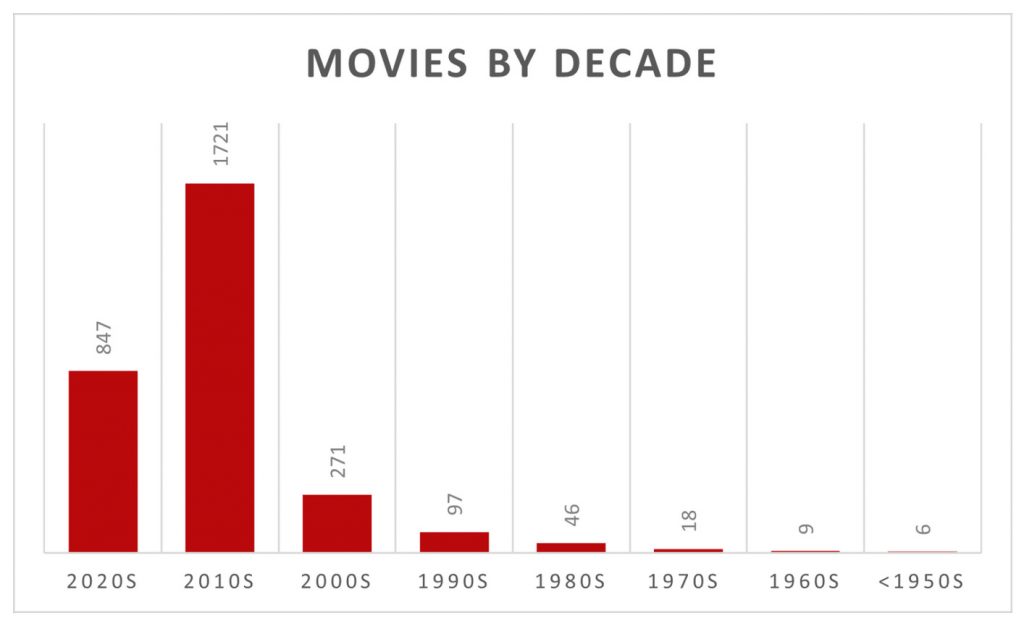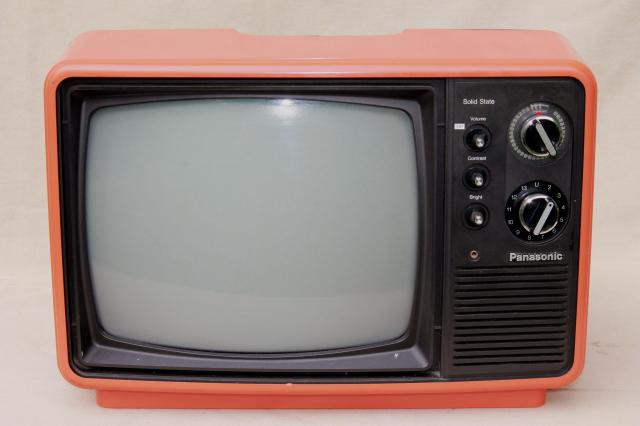So Many Choices, So Little to Choose
Old Man Rant, take one. Lights, camera, Action!
Ask anyone who really knows and loves movies — what was the greatest decade in the history of American film? You will get many different answers, depending on the respondent’s preferences and degree of familiarity with the films of the past.
The familiarity part is essential, of course; without it you may think that the latest entry in the Fast and Furious franchise is the Greatest Movie You’ve Ever Seen, and tragically, you’ll probably be right. (That kind of presentism is why I can’t stand The Ringer’s popular Rewatchables podcast, which I should love, being movie-obsessed as I am; even when they’re talking about a film I like, the unspoken, always-lurking assumption that cinema didn’t exist before Star Wars drives me up the wall.)
I’m not sure what my answer to the question would be, though it would likely come down to the 30’s, 40’s, or 70’s. I might end up going with the 30’s, the decade of The Wizard of Oz and The Adventures of Robin Hood, of Astaire and Rogers at RKO and the great Universal monster and Warner Brothers gangster films. Or maybe I would settle on the 40’s, the era of Citizen Kane and the classic John Ford westerns, of John Huston’s The Maltese Falcon and The Treasure of the Sierra Madre, of Bogart and Bacall, Cary Grant and Ingrid Bergman. Or I might finally choose the 70’s, the years that gave us Taxi Driver, Jaws, and Five Easy Pieces, that showed us Brando as Vito Corleone and Colonel Kurtz and saw the rise of Jack and Dustin, Jane and Peter. It’s an impossible choice with no right or wrong answers; my pick would probably shift with the days of the week and the last movie I happened to see.
Though I might not know what decade I would ultimately choose if I had to pick, I do know that those thirty years (together with the 50’s — Vertigo and Rebel Without a Cause, Burt Lancaster, Kirk Douglas, and Marilyn Monroe, and the 60’s — the “New Hollywood,” Bonnie and Clyde and Psycho, Heston vs. the Apes and Eastwood vs. everybody) are represented by 33 movies out of the 3,015 films currently available on Netflix. 33 movies to represent half a century of American cinematic culture and achievement. Orwell’s memory hole couldn’t do any better at erasing the past, and it’s a fair bet that the ratio’s not much different on the other major streaming services (with the honorable but limited exceptions of the Criterion Channel and Turner Classic Movies); where the “industry leader” goes, others follow.
 Movies on Netflix by Decade. Source: Adweek
Movies on Netflix by Decade. Source: Adweek
The Los Angeles Times recently summed up the situation like this:
Despite the seemingly infinite sea of content on an ever-expanding array of platforms, many cherished films and TV series remain unavailable to stream, caught in a tangled web of licensing quandaries, rights dispute and ever-shifting corporate strategies.
The list of films absent from the streaming landscape includes classics (Alfred Hitchcock’s 1940 Gothic thriller Rebecca, Elaine May’s 1972 rom-com The Heartbreak Kid); cult favorites (George Romero’s Dawn of the Dead, David Lynch’s Wild at Heart, Pink Floyd: The Wall) and crowd-pleasers (The Cannonball Run, Cocoon). Iconic TV shows like Thirtysomething, Northern Exposure, L.A. Law and Homicide: Life on the Streets are nowhere to be found.
How do you get to love old movies, or even to know that they exist, to know that when you have an itch for a dark tale of criminal passion, you could profitably spend your time watching Double Indemnity or Detour or Chinatown instead of the latest thing bobbing along on the turbid surface of Amazon Prime or Apple Plus or HBO (oh, excuse me — Max)?
It’s simple — you learn to know them and love them by having them around you, by having them as choices that are just as present, just as available as the other options crowding the cultural shelves. And lest you think I have my nose too high in the air and am concerned only with the absence of certified “great” older movies from the streaming landscape, those aren’t the only MIA’s I’m cheesed about; just try finding The Invisible Ray or Captive Wild Woman or Green Slime on your favorite premium streamer. Just try. (Prime does have movies like that, but the video quality is often so bad as to make them unwatchable.)
When I think back to my younger days and the wealth of old films that were available to me every day of the week on primitive old pre-cable, pre-streaming “free” television, I’m glad to have grown up when I did; my local Los Angeles channels provided a virtual film history course, even with all the edits and commercials. There wasn’t any internet to eat up the hours, and the movies of Netflix’s missing decades were there all the time, especially late at night and on the weekends. Watching them made me a lifetime movie lover.
Today, though, acquiring a deep familiarity with classic movies (or with anything that’s not new) has become harder rather than easier; it’s certainly not something that you can pick up casually by just watching TV, as I did in the 60’s and 70’s, and the aforementioned Criterion and Turner channels are for people who are already movie fanatics. It’s a cinch that today’s streamers are not going to help change things, except for the worse; indeed, in many ways the current media environment with its burgeoning plethora of choices gives people less real choice than they had fifty years ago. It’s like being locked in a candy store that’s tripled its floor space but now sells nothing but red licorice.
Of course, not everyone will agree that the anemic Netflix ratio of the classic to the current is a problem, and if you do really think that The Fast and the Furious is the greatest thing that’s ever appeared on the screen, more power to you… oh, wait a minute. You’ve got all the power already.
For myself, I suppose I’ll have to keep renewing my Criterion subscription and continue to acquire the films I like in those clunky, old-fashioned physical forms (DVD, Blu-ray) that the brave, new streaming era have made obsolete… obsolete, that is, unless those are the movies you want to watch.
Cut! Print it.
Thomas Parker is a native Southern Californian and a lifelong science fiction, fantasy, and mystery fan. When not corrupting the next generation as a fourth grade teacher, he collects Roger Corman movies, Silver Age comic books, Ace doubles, and despairing looks from his wife. His last article for us was Living Large: Bert I. Gordon 1922-2023


It is amazing how many different kinds of old movies we were exposed to in the pre-cable days. Though born in 1969, I grew up watching John Wayne movies (a host of Westerns, including “spaghetti”, and war movies), Abbott and Costello comedies, Universal monster movies, Godzilla so-ho, etc. etc. Why are the online choices so paltry?!
Multiple reasons/causes, I’m sure. One factor may be that the political and social attitudes prevalent in the older movies and TV shows don’t align with those of major media providers. The older movies and TV were generally about the problems of white men and women (rather in comedies or dramas) and the problems were often solved by white men in a romantic relationship with a white woman.
The people making decisions about broadcasting now are probably college graduates. College has changed dramatically in the most recent 50 years. An enormous privileging of recent writing has emerged. A very liberal colleague of mine admitted that he was once in conversation with one of his undergrad students who remarked to him that this would be the third course he or she had had in which Beloved was one of the required texts.
Even the Chronicle of Higher Education has recently published an article criticizing the way the shibboleth of multiculturalism has coincided with the loss of foreign languages from universities. In other words real multiculturalism has receded even as it has been emphasized in recent decades.
I know of a retired professor who developed a course in literature of the non-Western world — a first-time offering at his small state university. He liked the course but voluntarily handed it over to a new, younger hire who had had experience teaching in the non-Western world. But where the original course featured, in one form or another, things like the Mahabharata, the medieval Chinese novel Journey to the West (in the form of Arthur Waley’s superlative retelling as Monkey), etc., the new instructor featured (I believe) only 20st-century (maybe 21st too?) works, i.e. works by people who had grown up in the same global milieu as ourselves.
Innumerable further examples could be given. The bottom line is that the situation you lament has to do with the gatekeepers. And the gatekeepers give us mostly what we already have plenty of.
“Presentism” is a great and useful word.
It is – I find it constantly useful. It’s not mine – I think I first saw it used by Alan Jacobs.
I don’t watch new movies anymore. It’s all reboots, Marvel assembly line super hero movies, or soulless animated kids movies.
So it’s a good time to catch up on the classics, preferably before “sensitivity experts” ruin them.
I’d say the 1940s were probably the best decade before the end of the Production Code in 1968.
I regret the passing of the Saturday and Sunday afternoon movies. Here in Sydney we used to be exposed to Westerns, comedies like the Marx Brothers, adventure films like Sinbad, war movies and even the occasional Aussie offering. Now it’s saturation sport with mindless commentators yelling, literally yelling, at the audience. The only positive in all this is that DVDs are so cheap today, allowing me to assemble a library of very rewatchable movies.
Funny, you’d think the major video streamers would realize a possible gold mine they might be passing on. Though I’m no expert, I have read a number of article during the last year or so that state when it comes to music streaming, older music is about half the total market.
Here in Portugal we still have a few cable channels showing some movies from before the 80s, but they are rare.
Anyway, this is the reason why DVDs and BDs won’t die for good anytime soon.
The worst thing about that towering 2010s column on the Netflix chart is that it is filled with shoddy C- and D-list films, hastily slapped together in order to fill up the suddenly-available space on Netfllix, an analog to the flood of terrible movies brought on by the VHS rental boom of the 80s and 90s. In both instances, there was a deliberate choice to ignore decades of quality films, in favor of the ever-popular lowest common denominators, sex, action, and gore.
It’s a good time to be a drama lover. There are so many great shows you have to watch, and I’m excited for the next episode with you.